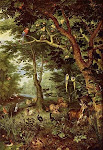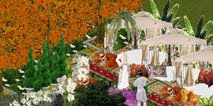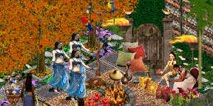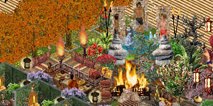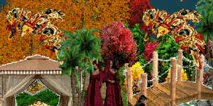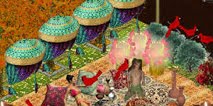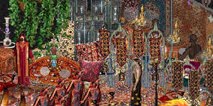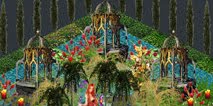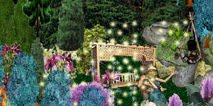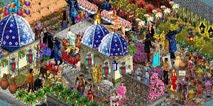This beautiful scarf was made by Glenda Howell of Peppercorn Minis. She gave it to me for no reason other than that I had commented on her post that this scarf is "right up my alley".
Glenda had written that she made this scarf using Noro silk and wool mix for yarn . Although the yarn for this scarf was store bought, she had once spun these yarn herself after shearing the sheep , also by her. She then made rectangles using a hand held 6" x 4" weavette loom and then crocheted each piece together. The sheep was probably fed by Glenda too. I now own this scarf that is made by the multi- talented Glenda's hands. Can you imagine how in awe I am of her? Or maybe you can't. By the way, not only was weaving a big part of her life before miniatures, Glenda was also a lace maker and an embroiderer. I remembered how overwhelmed (and over the moon) I was when I found out that this super talented woman wanted a pair of my shoes.
I received her parcel on 8th July 2010 but did not post about it because I was waiting for the right occasion. Today is the right occasion and you will find out why when I complete my post on my other mini blog at The Maharajah's Palace.
Needless to say. this is now my all time favourite scarf. I place it near where I work on my minis so that I can use it , see it and appreciate it often. It also serves a reminder of the wonderful people I have met on blogland.
Thank you Glenda, very very much!





























































